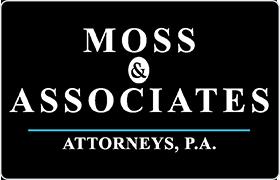 Landrum Reorganization Lawyers, South Carolina
Landrum Reorganization Lawyers, South Carolina
Sponsored Law Firm
-
 x
x

Click For More Info:
-
Moss & Associates Attorneys, P.A.
816 Elmwood Ave Columbia, SC 29201» view mapBankruptcy & Debt Debt Problems? We Have Solutions!
We provide our clients with a unique combination of top-quality representation, small-firm economics, and commitment.
800-821-6041
Sponsored Lawyers
1-1 of 1 matches
Bankruptcy & Debt, Bankruptcy, Reorganization, Collection, Workout
Randy A. Skinner understands the stress of unemployment and economic uncertainty. Twenty years ago, with a new wife and a mountain of educational debt, he was downsized from his very first job during a recession. Even with three degrees from the University of South Carolina (B.S., M.B.A., and J.D.), his employment prospects looked bleak, so Mr. Skinner took the only route available to him: He started his own firm.
(more)


 Jason T. Moss Columbia, SC
Jason T. Moss Columbia, SC Practice AreasExpertise
Practice AreasExpertise

